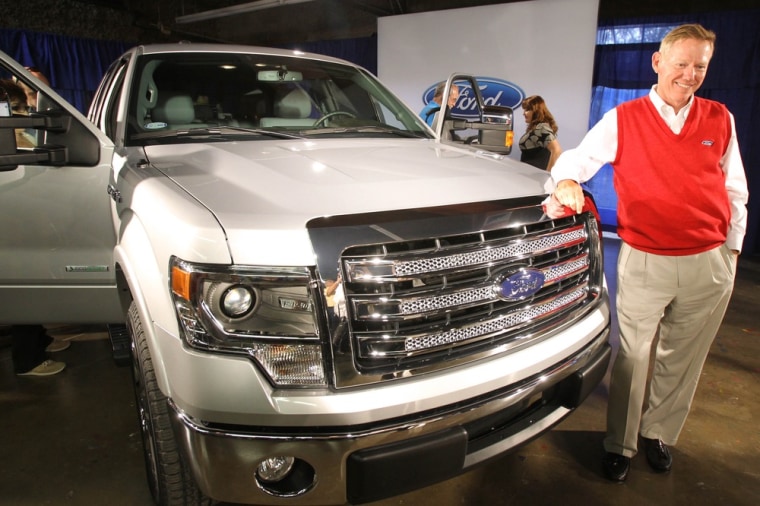Passengers have a habit of packing some unusual things in their luggage, but when a Ford engineer passed his bag through security recently, it clearly took the TSA X-ray technician by surprise. It wasn't a gun, knife or illicit drugs but a big steel block. More precisely, it was the main piece of a new 1.0-liter engine that Ford will begin offering on its Fiesta subcompact next year.
With gasoline prices surging to near-record levels and many experts forecasting a steady climb over the next few years, consumers are looking for ways to cut their fuel bills. There’s a clear trend towards downsizing, with compact and subcompact automobiles increasing their market share substantially.
But Americans have traditionally been believers that big is better, and despite expectations, demand for SUVs and CUVs hasn't collapsed. If anything, sales of pickups are, well, picking up again. Yet, these vehicles are getting far more mileage than ever before and downsizing also gets the credit – but unless you peak under the hood, you may not notice.
Take the Ford F-150. The full-size pickup has traditionally been powered by an assortment of big, bigger and truly enormous V-8s. But over the last year, roughly half the F-Series trucks rolling out of Ford showrooms have been equipped with smaller V-6s.
“The old saying that ‘there’s no replacement for displacement’ is now obsolete,” said Bob Fascetti, director of global engine operations for Ford.
Downsizing trend
The Detroit automaker isn't the only one discarding that old adage. Hyundai delivered quite a shock, a few years ago, when it introduced the latest-generation Sonata line, the midsize sedan coming equipped only with a four-cylinder engine rather than the traditionally prerequisite V-6 option. A growing number of competitors have since copied that approach.
“The downsizing trend that captures the change in the auto industry is the switch to four-cylinder engines,” notes Jim Farley, Ford’s global marketing czar.
It’s not the first time automakers have downsized powertrains. They tried that strategy in the 1970s and ‘80s, following the twin Mideast oil shocks. But the engines they came up with were, to put it bluntly, unfit for the job. Motorists largely steered clear of what were derisively known as “stone ponies.”
Today’s downsized engines are an entirely different breed, however, thanks to more sophisticated technologies like direct injection, variable valve timing and advanced turbocharging.
“We’ve come a long way in terms of the power output of small engines,” said Dave Sullivan, auto analyst with AutoPacific, Inc. And in the process, “We’ve reached the point where bigger cars can get the fuel economy of smaller cars” without sacrificing much – if any – performance.
Consider Ford’s new 1.0-liter EcoBoost engine, the one that caused a stir when the block was put through X-ray. In decades past, 3-cylinder engines were found on only the lowest-cost econoboxes. They were rough, slow and generally unpleasant to drive. The new turbocharged Ford powertrain, however, actually develops substantially more horsepower and wheel-spinning torque than the current 1.6-liter engine found in the Fiesta.
Automotive engineers like to talk about “specific output,” the amount of power from a given displacement. The new 1.0-liter EcoBoost produces 123 horsepower per liter. Compare that to the big Lamborghini Aventador, its 6.5-liter V-12 producing “just” 108 horsepower per liter.
A new age
The trend towards downsized engines isn’t limited to mainstream and economy cars. Even luxury makers are shifting gears, many buyers demanding more environmentally friendly technology even if they can afford the gas bills. Bentley recently launched a new V-8 that is a virtual match for the performance of its classic V-8.
Those new technologies, such as direct injection, helped Porsche deliver more horsepower – even as it bumped up the fuel economy of its latest-generation 911 sports car by a substantial 16 percent.
Of course, other breakthroughs also help, like improved aerodynamic designs and advanced 7-, 8- and even 9-speed transmissions that ensure an engine is always operating at its most efficient RPM speed.
“We’re entering a new age,” said Ford’s Farley, where the latest gasoline-powered drivetrains are now delivering “fuel economy in the range of what hybrids used to get.”
And so, while advanced powertrains like EcoBoost might carry a modest premium over traditional gas engines, they’re still substantially cheaper than hybrids. That’s one reason, the Ford marketing chief said, why sales of hybrids and battery cars may not be growing as quickly as expected despite this year’s run-up in fuel prices. In fact, he notes industry studies showing some current hybrid buyers “would switch back” to conventionally powered vehicles.
That said, Farley and other industry executives aren’t ready to write off battery-based vehicles. As good as the latest gas engines are getting, some experts warn the technology may soon hit the wall. And with the recently approved federal Corporate Average Fuel Economy standard calling for 54.5 mpg by 2025, the industry may still be forced to adopt more hybrids and battery cars – and push for more vehicle downsizing.
But as the latest 1.0-liter EcoBoost illustrates, the gas engine is showing a lot more life than many had anticipated – and that’s clearly good news for American motorists who still like their big sedans, pickups and SUVs.
